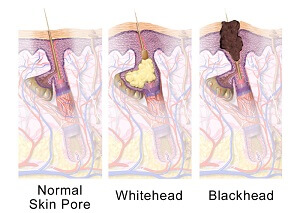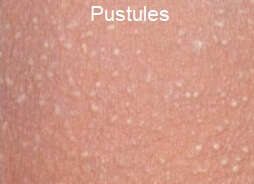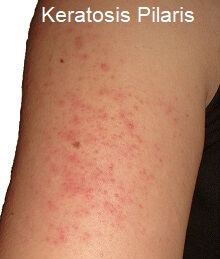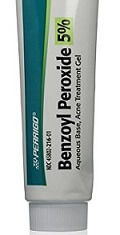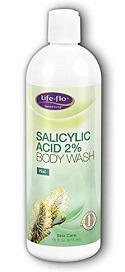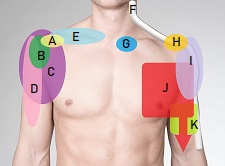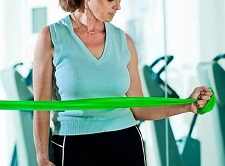- Home
- Common Shoulder Problems
- Shoulder Acne
Shoulder Acne
Written By: Chloe Wilson BSc (Hons) Physiotherapy
Reviewed By: SPE Medical Review Board
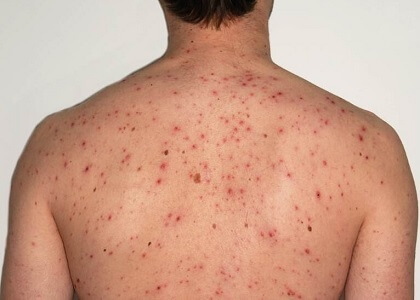
Arm and shoulder acne is a common problem that can be very unpleasant.
There may be a scattering of small white or blackheads, a covering of large pus filled spots or anything in between.
Acne is commonly thought of as only affecting the face but nearly three quarters of acne sufferers will also have problems on their shoulders, back and chest.
Here we will look at the common causes of shoulder acne that may also affect the back, chest and arms and the best ways to treat them – which products work best and what lifestyle changes that can help.
If you only have one or two lumps around your shoulder, chances are it's not actually shoulder acne but something else going on - check out the Shoulder Lumps article to find out more.
Causes of Shoulder Acne
Shoulder and arm acne can be caused by excessive production of oils that clog pores (common in puberty), friction, excess keratin or an allergic reaction.
1. Excess Sebaceous Secretions
Acne can develop on any part of the body that has hair follicles or sebaceous (oil-secreting glands) – which is basically anywhere other than the soles of your feet and your palms. It most commonly affects the face, in fact over 90% of acne sufferers have facial acne, but 60% have back, chest of shoulder acne which usually indicates that your acne is more severe.
Your back and shoulders have a number of sebaceous glands. These secrete an oily substance known as sebum. Sebum helps to protect the skin, keeping it hydrated and supple, but if the body produces too much sebum, it can clog together with dead skin cells and bacteria around hair follicles, blocking them which leads to the dreaded spots.
There are six different types of acne lesions that can form on your shoulders and arms:
- Whiteheads: When a clogged follicle is completed blocked (i.e. no air reaches it), a white bump develops over it. AKA closed comedone
- Blackheads: Similar to whiteheads but instead of being closed over, they are open. As a result, they are open to the air and the sebum oxidises, turning black
- Papules: These develop when pores are so irritated that the hair follicle wall breaks down. A small, red, inflamed bump develops on the skin. They feel rough, tender and hard to touch
- Pustules: Similar to a papule but filled with white or yellow pus. Surrounding area is usually inflamed. These are what we typically refer to as zits or pimples. They are often painful and may get quite large
- Nodules: Irritated blocked pores where the lesion develops below the skin surface, forming a hard, painful nodule. They are larger than papules, usually over 5mm wide and deeper, forming under the skin rather than on top of it
- Cysts: Similar to nodules but filled with pus so they feel softer
But what causes the body to secrete excess sebum? It is not always entirely clear but is thought to be linked with hormones. During puberty, androgenic hormones such as testosterone cause the sebaceous glands to produce more sebum, which is why acne is particularly common in teenagers. Menstruation causes fluctuations in oestrogen levels which can result in acne, particularly on the back and arms. There can also be a genetic link.
2. Acne Mechanica
Another type of back and shoulder acne is what is called acne mechanica. It is caused by friction over the skin, especially in hot conditions. Acne mechanica develops when heat is trapped against the body for a prolonged period and sweat blocks the hair follicle resulting in comedone formation. If there is also sustained pressure or repetitive friction, the pores are irritated and become inflamed, so papules and pustules develop.
Shoulder and arm acne mechanica may be caused by tight-fitting clothing, backpacks, purse/handbag straps or tight fitting bras as they can all trap sweat next to the skin. Soldiers are often affected, as they carry their heavy backpacks for long periods, especially when they are in hot, humid climates.
3. Keratosis Pilaris
With Keratosis Pilaris, excess keratin (a protein) and dead skin cells stick together and block hair follicles causing pores to widen, forming multiple tiny bumps on the skin, most commonly on the upper arms or thigh. These bumps may be white, red or skin-coloured and can look a bit like goose bumps or plucked chicken skin. The skin tends to feel rough, like sandpaper.
There is a strong hereditary link with keratosis pilaris and this type of shoulder and arm acne usually first presents in childhood. It often gets worse during adolescence then improves towards and during adulthood. It is often associated with dry skin conditions such as eczema. It is extremely common, affecting 1 in 3 people but is completely harmless and not contagious.
Shoulder acne from keratosis pilaris tends to occur on the back of the upper arms. It usually improves during summer months and gets worse during the winter. Visit the Keratosis Pilaris Treatment section to find a whole range of treatments that can help.
4. Allergic Reaction
Allergic reactions can also cause shoulder acne. Laundry detergent, fabric softeners, body lotion and moisturisers, shampoos and conditioners can all lead to outbreaks.
Shoulder & Arm Acne Treatment
Treatment for shoulder acne tends to be similar, whatever the underlying cause or type of acne. The aim is to remove any excess oils, sweat and bacteria without irritating the skin. As the skin over the shoulder and upper back is tougher than on the face, you can use more powerful treatments than with facial acne.
#CommissionsEarned from Amazon on qualifying purchases
Here are some things you can try to get your shoulder and arm acne under control:
- Medication: Acne medication cream can really help to reduce inflammation and the amount of bacteria on the skin. A good one to start with is benzoyl peroxide can really help, but beware that it can bleach clothing. Start with 2.5% strength as 5% and 10% can lead to irritation if you have sensitive skin.
If over-the-counter medication is not working, you should see your doctor or dermatologist as you may benefit from stronger lotions, antibiotics or hormonal therapies - Acne Products: There are a whole range of creams and lotions available that can help such as retinol cream or alpha hydroxyl acid. They work as exfoliants to remove dead skin and de-clog pores to help treat/prevent shoulder acne.
It also helps to moisturise dry skin, especially if your shoulder acne is caused by keratosis pilaris, but try to avoid oil-based moisturisers. Look for products labelled as “non-comedogenic”. Visit the arm acne section to see our favourite products and find out which ones are best for you
- Shower Regularly: Showering in lukewarm water, particularly after exercise helps to wash off sweat, bacteria and oils and thus reduce the change of pores getting clogged up. Use oil-free body wash containing 2% salicylic acid. Avoid too much friction over the skin – opt for a soft cloth so you don’t make things worse.
Make sure to completely wash off any soap, body wash, shampoo and/or conditioner so it doesn’t irritate or block your pores. Hot water opens up pores, cold water closes them. Don’t wash more than twice a day or else you can irritate the skin and dry it out which may make shoulder acne worse - Clothing: Where possible, wear clean, loose-fitting, light-weight clothing, ideally made of natural fabrics like cotton to help reduce sweating. This is particularly important with T-shirts, tops and bras
- Laundry Detergent: Laundry detergents often contain chemicals which can irritate the skin. Try switching to a laundry detergent designed for sensitive skin, preferably one that is unscented
- Bedding: Change your sheets regularly, at least once or twice a week as dead skin cells quickly build up. Opt for 100% cotton sheets to reduce sweating, and don't forget to think about what laundry detergent you are washing them in
- Reduce Pressure: Try to avoid going for prolonged periods with pressure or friction over your shoulders/upper back e.g. backpacks and purse straps. If you need to use them, wear a cotton t-shirt to absorb sweat
- Home Remedies: Aloe Vera, apple cider vinegar, mint, lemon juice, tea tree oil, honey and turmeric masks and green tea rinse are popular home remedies for shoulder acne
- Don’t Squeeze: Avoid the temptation to squeeze any spots/pimples. I know it's tempting but it can cause further inflammation, it pushes the pus deeper under your skin and can cause permanent scarring
You can find out loads more about the best options for you in the shoulder acne treatment article.
Unfortunately, there is no quick fix for shoulder acne – it usually takes a few weeks of using these treatments to notice an improvement, so don’t give up too quickly. If there is no improvement after around six weeks, visit your doctor and see what they can recommend.
Other Causes of Shoulder Acne
Other things that can cause shoulder acne include:
- Medications: may cause back or shoulder acne particularly penicillin based antibiotics or even facial acne medication. This usually clears up quickly when you stopped taking the medication
- Malassezia FurFur: a type of yeast that grows on the skin. It normally doesn’t cause any problems but in rare cases, chemicals are produced which change the pigmentation of the skin resulting in white patches
- Acne Conglobata: a severe, painful form of acne where large, pus-filled cysts form deep in the skin across the shoulders, upper back and face. It tends to affect men and is a genetic condition, but can also be associated with anabolic steroid use
- Swimming Pool Acne: caused by a reaction to chlorine
Common Myths About Acne
There are many myths about shoulder acne that are not true. Acne is NOT:
- Caused by poor hygiene
- Caused by poor diet
- Influenced by having sex
- Improved by sunbathing or using sunbeds
- Infectious
What Else Can Help?
Arm and shoulder acne is usually not serious but it can make people feel very self conscious. It is not one of those things you just have to put up with and hope you will grown out of, visit the arm acne treatment section for ideas on things that can help.
There are lots of other causes of lumps and bumps around the shoulder which may be nothing to do with acne - have a look at the shoulder lumps article to find out more
Related Articles
Page Last Updated: May 21st, 2024
Next Review Due: May 21st, 2026
